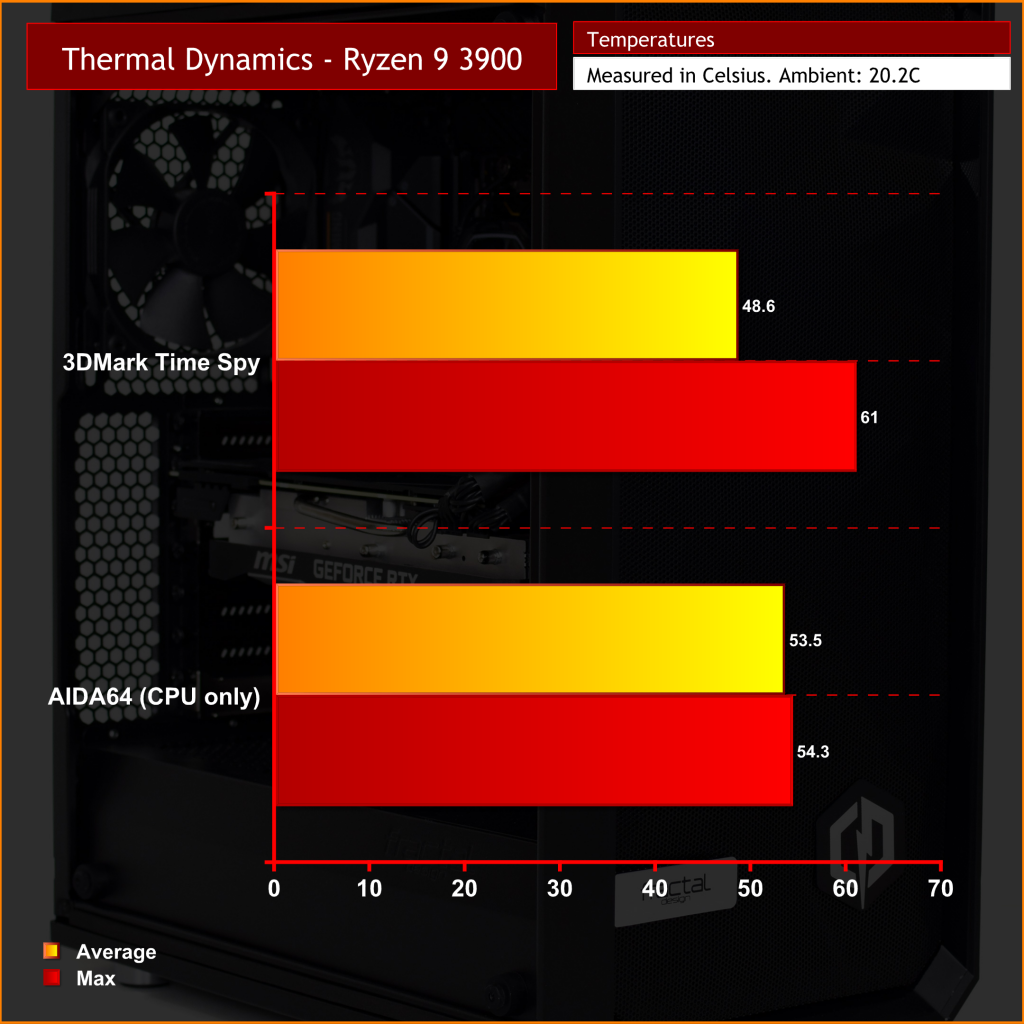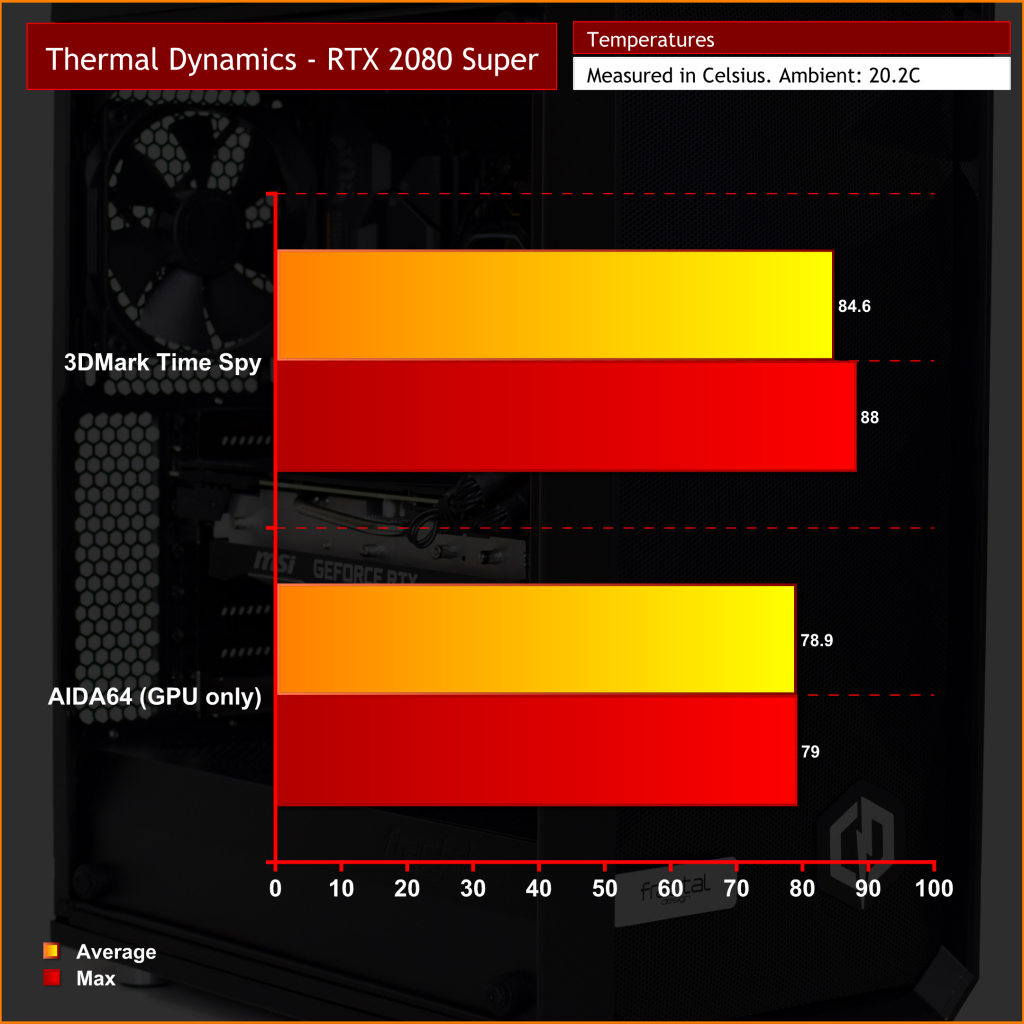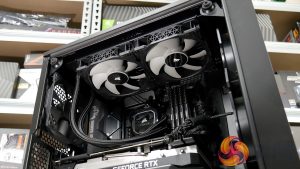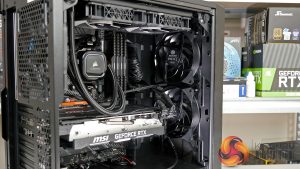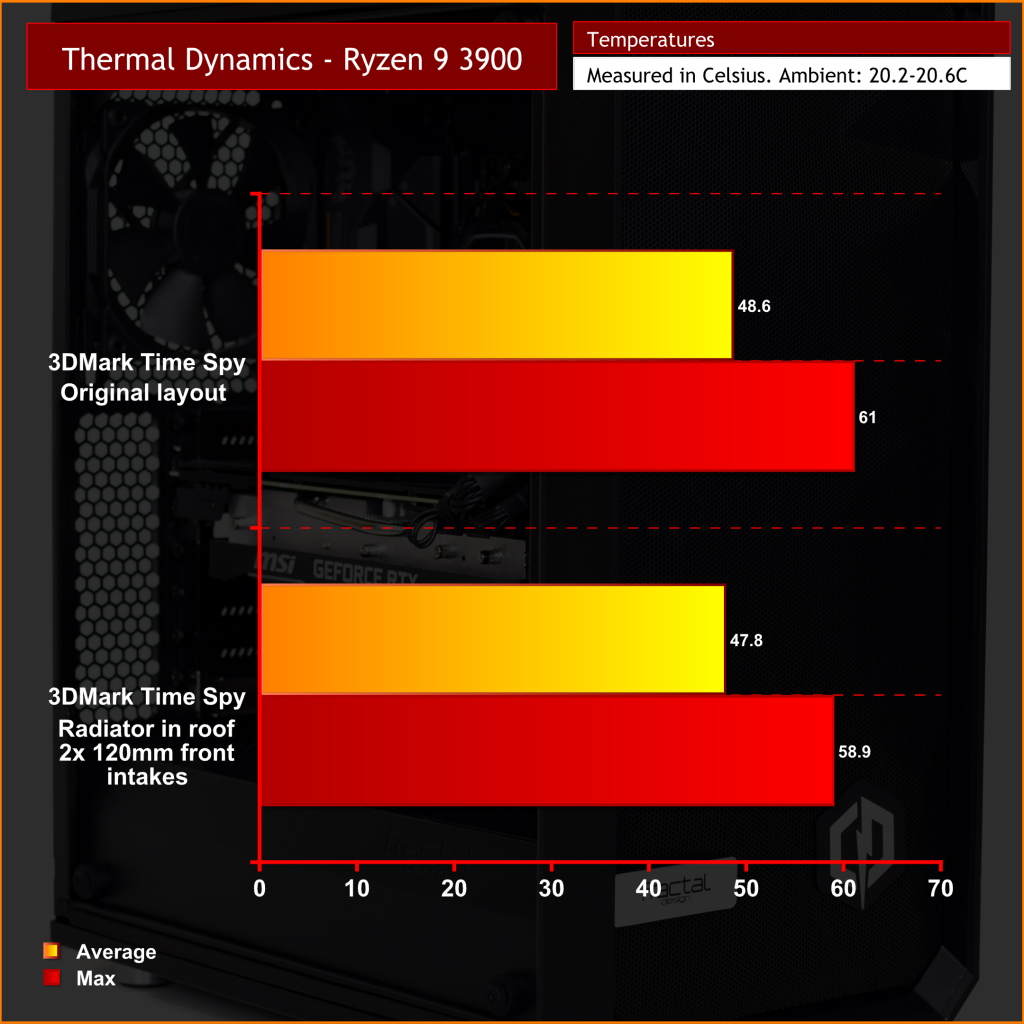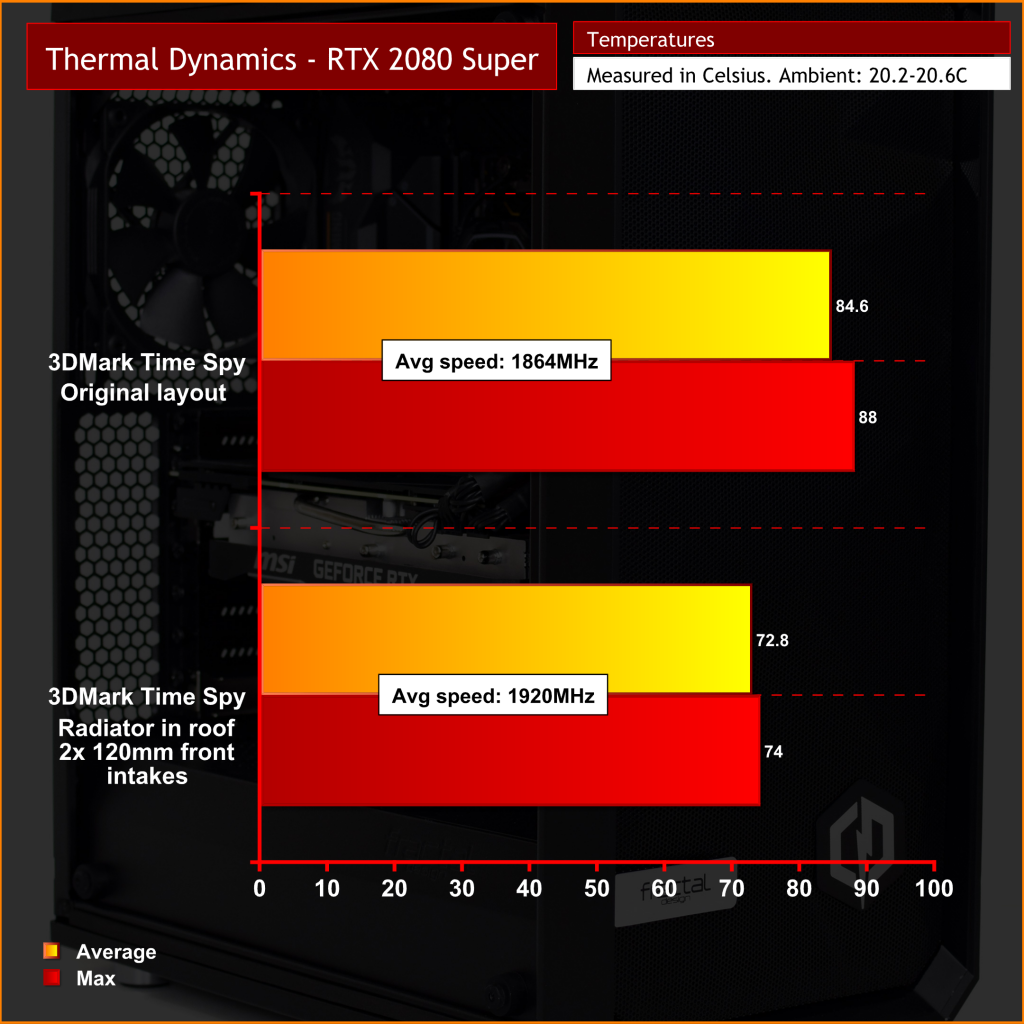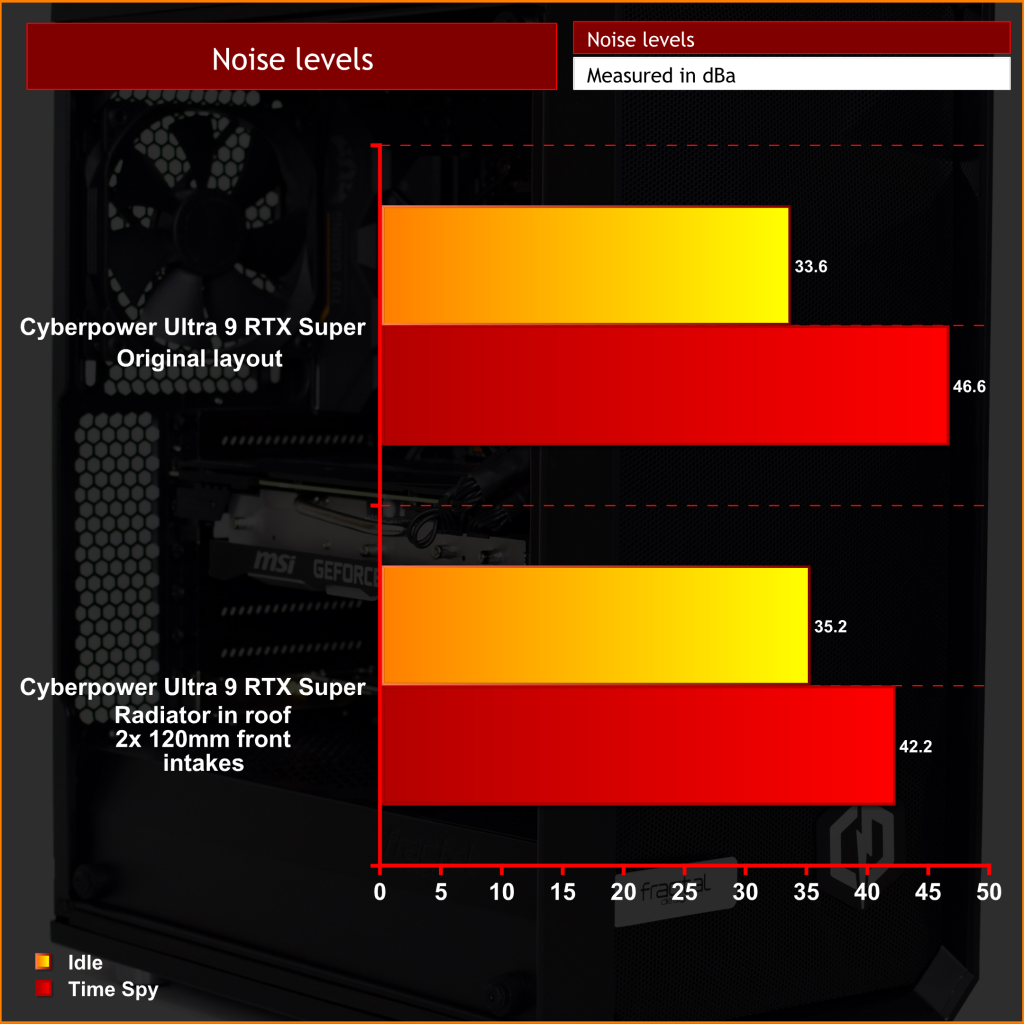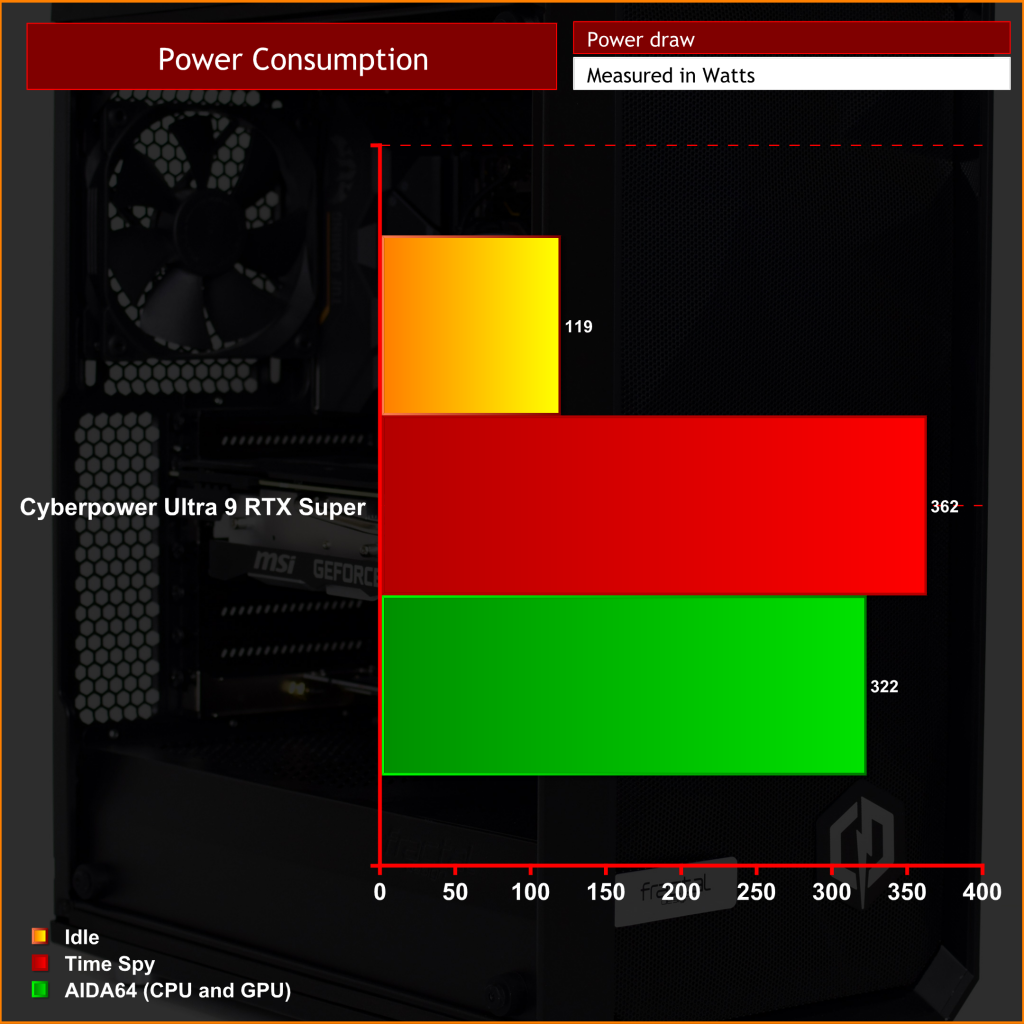System thermals
Looking now at our thermal testing, if we start with the CPU we can see that, regardless of whether we were running our AIDA64 stress test or 3DMark Time Spy, CPU thermals were very impressive. After all, this is a 65W TDP CPU being cooled by a 240mm AIO liquid cooler. The hottest we saw the CPU run was a spike up to 61C during Time Spy, but that was very momentary as the temperature averaged under 50C for the duration of the test. Even being pummelled in AIDA64 at 100%, temperatures didn't reach 55C.
The GPU, however, is another story. In our 3DMark stress test (and during real world gaming) we saw the GPU continually hit its 84C temperature target, with spikes up to 88C registering during the Time Spy run. I also noticed its fans ramping up significantly, often running at over 3000rpm when under load.
System thermals re-evaluated
Clearly the graphics card performance is sub-optimal, and initially I thought it was just a lousy aftermarket card. However, I wanted to try moving the radiator from the front of the case – as we noted at the beginning of this review, this can affect system thermals as warm air is being brought into the case.
So, I moved the radiator to the roof of the case and installed 2x 120mm fans from Cooler Master in the front – just basic PWM fans to bring some fresh air in…
…and the difference is remarkable. Not so much for the CPU as that was already very cool-running, but the GPU saw a huge drop in temperature – 14C in regards to peak temperature, and over 11C when looking at average temperature for the duration of the 3DMark stress test.
Not only is that now well below the temperature target of the graphics card, but it also allows the card to run faster. To prove this, average clock speed of the 2080 Super with the radiator at the front of the case was just over 1860MHz. Moving the radiator to the top, and adding two intakes, allowed the GPU core to run almost 60MHz faster.
Noise levels
Not only are temperatures greatly improved, but overall noise is noticeably lessened with this updated configuration. The primary reason being for this is the GPU fans can spin significantly slower while still maintaining lower temperatures. Proving this, in the default configuration GPU fan speed would ramp up to 93%, or around 3150rpm. With our updated configuration, however, fan speed dropped to 65%, or just over 2200rpm. It makes a massive difference.
Power consumption
Lastly we come to power consumption. With a 750W RM 80+ Gold rated PSU from Corsair, the Ultra 9 RTX Super draws less than half of the power supply's rated wattage. This ensures strong efficiency levels and also means there is plenty of headroom for upgrading down the line – perhaps users might want to drop in a next-gen Ryzen part with 16+ cores, or upgrade the graphics – there is certainly scope to do that here.
 KitGuru KitGuru.net – Tech News | Hardware News | Hardware Reviews | IOS | Mobile | Gaming | Graphics Cards
KitGuru KitGuru.net – Tech News | Hardware News | Hardware Reviews | IOS | Mobile | Gaming | Graphics Cards


